Thriving Workplaces
Companies across all industries are looking for innovative ways to attract and retain the best talent and foster creativity, innovation and employee satisfaction through creating thriving workplaces. Changes in employee behavior and work style are creating a tectonic shift in company structures, ways of working and office design. Nowadays successful workplaces are so much more than just a nice place to work.
There are several key elements that help organizations create attractive workplace experiences for their employees such as an empowering work philosophy and company culture. This usually involves a management style and an entrepreneurial spirit that encourage proactiveness, innovation, flexibility and creativity, while promoting personal development and providing opportunities for career advancement.
But one of the crucial ingredients in creating a positive experience for employees is the physical space that they work in, as offices increasingly reflect the company’s brand and culture. Research has found that employees thrive in a work environment that encompasses spaces that optimize collaboration through technology and collaborative interior setting, but also offer areas to focus, socialize and conduct different types of work. Another important factor is flexibility – a possibility for employees to choose when, where and how they work to achieve their best performance. A report shows that 74% of UK businesses believe flexible working makes their employees more productive, while a study by JLL demonstrates that 91% of workers desire more control in their workspace.
| Wellbeing | Smart Workplace | High Performance | Flexibility |
| Working in collaboration with strategic planners, architects and interior designers, we seek to maximize the occupant wellbeing by considering noise and acoustic, air and water quality, lighting and daylight, and biophilic design, complying with the WELL and Fitwel Certifications. | Smart Workplaces blur the lines between the physical and digital environments by using technology to make the most of space. They learn what is required of them, and feedback actionable data to continuously improve their performance, further boosting the competitive edge they provide. | Creating Green Buildings is highly important to our clients to decrease energy cost and meet regulatory requirements for reducing carbon emissions, while providing an attractive environment to their workforce. | Flexibility in the way people work and in office layouts, is becoming the optimal way for companies to make the most of their workforces and real estate portfolio. |
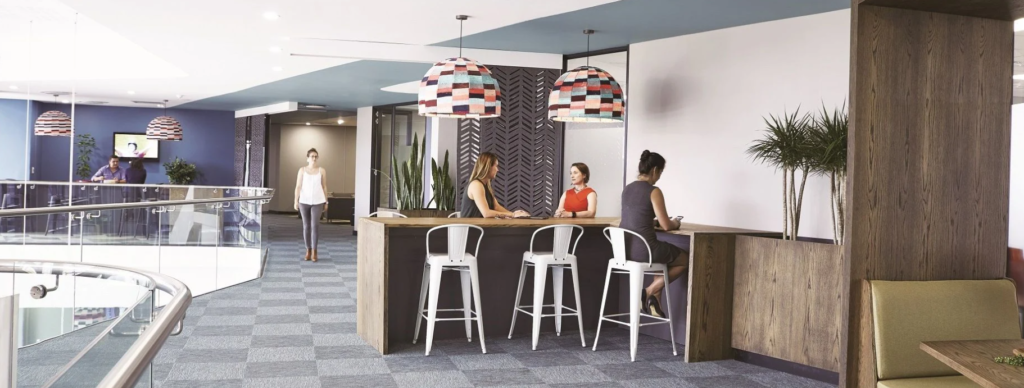
Wellbeing in the Workplace
People are any business greatest asset. It follows that a healthy, happy workforce is a vital component of long-term commercial success. Employers increasingly realize that offering a good salary or pension is no longer enough. The brightest and very best talent wants to work in attractive environments that provide support and inspiration.
The link between employee attitudes and business performance has been understood for decades, but it is only in more recent years that the impact of workplace on wellbeing has become evident.
A growing body of research, including an evidence-based report published by the World Green Building Council, suggests that the physical work environment directly influences the health, wellbeing and productivity of workers. Furthermore, a great workplace influences staff attraction, satisfaction, efficiency and retention.
With staff costs, including salaries and benefits, typically making up about 90% of a business operating costs, it makes sense that even marginal improvements to worker productivity can turn into significant overall commercial gains.
Wellbeing and Fitwel Certifications
Wellbeing oriented buildings promote, or provide, a wealth of elements relating to welfare; from clean air, adequate natural light and thermal comfort, to ergonomically designed interiors that stimulate physical activity, healthy material selection, and access to clean water, wholesome food and exercise. Other important factors for creating a healthy working environment include the physical location of the building and easy access to amenities that could either be part of the workplace or located in the surrounding area.
When part of client’s objective, our accredited professionals and design teams help the workplace design achieve the highest possible levels of WELL, Fitwel, RESET and other wellbeing-related certifications. We advise multidisciplinary teams on what the certification means, what every individual credit requires and who is responsible for it. We manage the entire process and provide design recommendations.
Thermal Comfort and Indoor Air Quality
Thermal comfort and indoor air quality are vital to wellbeing. The concentration of some pollution indicators can be two to five times higher indoors than outdoors. By maximizing the use of fresh air, taking into consideration humidity and air motion, and designing effective airflow, our engineers ensure high indoor air quality. Thermal, acoustic and ergonomic comfort as well as water quality are other priority areas for optimizing the work environment. Studies indicate a 10% reduction in performance at both 30°C and 15°C.
Lighting and Daylight
The exposure to daylight, the quality and quantity of electric lighting, glare control, and task-appropriate illumination levels are thought to help improve energy, mood and productivity. High natural light levels and quality illumination help to minimize disruption to the body’s natural circadian system. Some reports suggest that those in offices with better daylight and views take 6.5% fewer sick days. ARTISTA’s specialist lighting design teams provide the optimal lighting for different areas of the workplace to best fit the intended need while making people feel comfortable and giving them a sense of wellbeing.
Biophilic Design
Incorporating nature into the work environment through biophilic design is a growing priority for companies in light of recent research. There is a rising recognition that green space and nature have a positive impact, particularly on mental health. Our designs facilitate, wherever possible, inclusion of green space into the workplace, whether this is exploiting views of the surrounding area, creating mechanical and ventilation systems so they support the biophilic design, or orientating structures to make the best use of nearby open space.
Occupant Surveys
Integrating wellbeing elements into an existing office building is a concern for many of our clients. Our experts conduct occupant surveys in the existing offices to get direct feedback on the building’s performance from the user’s perspective. We use this information to identify the areas for improvement and inform the design to enhance the occupant’s experience. Occupant surveys could also be necessary as part of a refurbishment programme or to support building certification process.
At ARTISTA, all our workplace projects, from large-scale new build projects to small refurbishment schemes, capitalize on the relationship between workplace, wellbeing and commercial success. ARTISTA adds value to businesses by putting people at the very heart of our designs, creating workplaces that inspire and enable workers to be the very best they can be.
Noise and Acoustics
Acoustics are a key component of worker wellbeing. Noise and lack of acoustic privacy are some of the most common complaints made by office workers, especially those based in open spaces. Research suggests that well designed acoustic environments can boost performance of demanding office tasks by as much as 50%.
ARTISTA’s specialist acoustics teams have the ability to design and engineer effective acoustic solutions to exacting client briefs. Our experts use bespoke 3D acoustic modelling systems to analyse specific interior design layouts and minimize background noise, while ensuring acoustic privacy for workers.
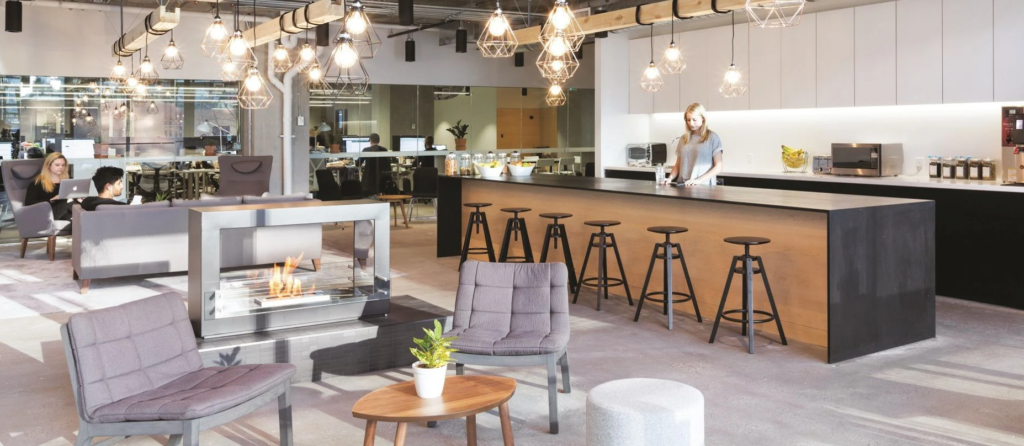
Workplace of the Future is Smart
In today’s competitive world, employees are increasingly expecting more from the workplace, while companies are seeking ways to attract and retain the best talent and improve productivity. Choosing a smart building approach to the workplace can help companies create differentiated experiences, improve collaboration and innovation, and optimise space and operational costs, while at the same time making best use of their real estate portfolio.
What is a Smart Workplace?
A Smart Workplace uses a combination of engineering systems, design approaches, and digital technologies to integrate previously disparate systems and create an intelligent building that responds to occupants’ needs. It does this by providing real time information on space, people, environmental conditions and energy use. Smart Workplace performance can be optimised through data collection and analytics, with its systems automated, remotely monitored and controlled.
The Business Case for Smart Workplace
It is widely-known that many ‘millennials’ value a healthy work environment very highly. Yet, according to statistics from the British Council for Offices, 39% of employees say their workplace does not support wellbeing.
As the line between private life and work is becoming increasingly blurred, employees of many businesses are expecting more from their workplace. They are looking for a comfortable environment equipped with technology services that match or exceed the performance of those they have at home. With ubiquitous digitization of services, workers now expect that the workplace provides the same digital experience they are used to with services such as Airbnb, Uber and Amazon.
To attract the most talented employees, businesses have to raise their game to offer more technologically-advanced, attractive and healthy work environments that are likely to increase productivity.
Traditionally, businesses have regarded offices as a cost center, so they have focused on optimizing energy usage and minimizing rental costs. But according to commercial property consultants at JLL, organizations annually spend on average $3 per square foot per year on utilities, $30 on rent and $300 on payroll. This means that even a few percentage of increased productivity is more than potential savings on energy and rent.
Smart approach to workplace regards offices not as a cost center but as a strategic driver of value. The focus is on increasing revenues through boosting productivity, innovation and collaboration, as well as attracting and retaining talent. This smart approach can also reduce absenteeism, bring down occupancy and service costs, as well as utility and maintenance costs.
All stakeholders in a smart workplace can benefit: the business can achieve improved productivity and provide better work experience for employees; employees can be happier and more productive as they are able to interact with the building to be more efficient and create personalized environments; human resources teams can use the benefits of smart workplace to enhance employer brand, talent attraction and retention; while real estate teams can reduce operating costs, increase energy efficiency and enhance their ability to measure space performance and adapt as necessary; for developers or landlords, a smart workplace approach can secure a new revenue stream, increase the competitive advantage of their building, provide them with sustainability credentials and the positive publicity that can result from developing an innovative building.
How are the Benefits Generated?
Smart buildings collect big data through sensors within the building, combining it with data from building systems, corporate applications and data generated by users to create analytic driven insights. This bank of information about movement, light, temperature, carbon dioxide levels, energy usage and occupancy, combined with enterprise resource planning systems, enables businesses to optimize employee experience, facilities management, real estate and business strategies.
A good example of enhanced employee experience would be a mobile application that is integrated with the building: this could help the employee select an appropriate work setting for a task, locate people to work with who could help with the task, and adjust the heating and lighting settings to preferred comfort conditions.
By monitoring and adjusting CO2 levels, the smart workplace can potentially enhance employee health and wellness and thereby decrease absenteeism. By analyzing data about people movement and occupancy levels, the companies can gain insight into the best places in their buildings for productive collaboration to happen and identify which spaces are under-utilized.
A smart building approach can also help optimize lighting to improve comfort and reduce energy usage which results in very substantial cost savings. Heating, ventilation and air-conditioning (HVAC) costs can be managed similarly through environmental sensors, fault detection and diagnosis analytics, and connected waste system, again improving comfort and reducing costs.
Creating a Smart Workplace
Technology has already transformed the way we work, yet in most cases the workplaces of today look very similar to early 20th century offices. To create a truly smart workplace fit for the 21st century, we should start by examining business model, strategy and culture to understand how to design an innovative workplace that can bring the most value to a particular business. This first step includes establishing the vision and experience that needs to be achieved. The next step is to develop a business case and strategy that considers the transformation and benefits the smart workplace will bring to the business, and the economic viability of the project. The next stage includes finding the best way to achieve objectives through engineering and implementing technologies. In addition, the way the business will operate its smart workplace must be fully thought through to ensure the business is equipped to optimize the desired experience and reap the benefits.
ARTISTA’s Role in Developing the Smart Workplace
At ARTISTA, we are passionate about integrating design, technology, and the human experience to create smart workplaces. We are pioneering in our use of Innovative Technologies such as Internet of Things (IoT) devices and platforms, large format interactive digital media, location-aware technologies and mobile applications, as well as our approach to business systems integration, cyber security, digital access, and advanced data analytics.
Through design-thinking, we co-design with stakeholders to deliver truly remarkable experiences. We develop smart workplaces that are not only simpler to navigate and deliver measurable safety, health and wellbeing gains, but are also operationally responsive and financially sound. The breadth and depth of our specialist knowledge mean we can provide all the services required for a truly ‘end-to-end’ smart workplace project – from business case modelling, through design technology advisory and core engineering, to post occupancy services.
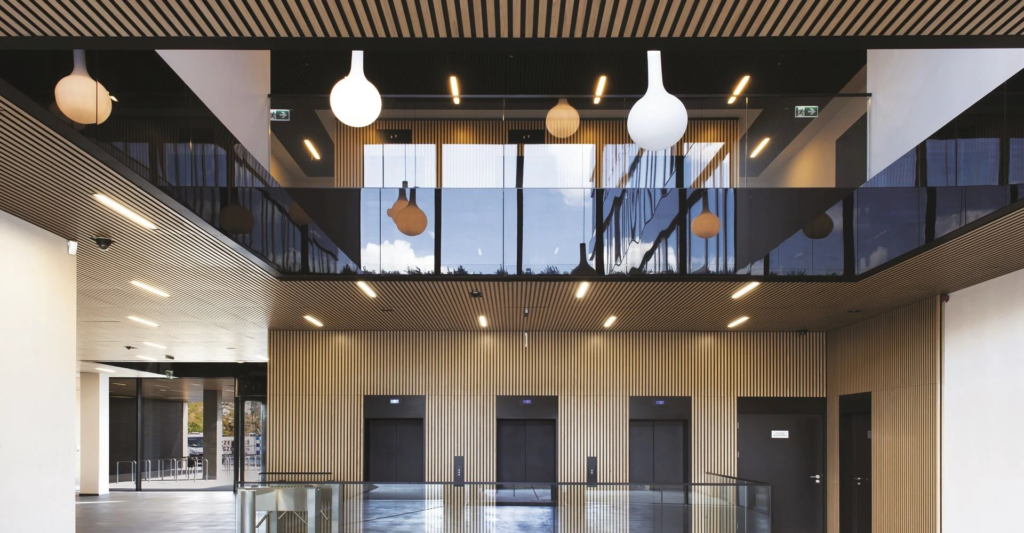
High-Performance Workplace
Sustainable and Commercially Viable
A high-performance workplace is one that achieves excellence across multiple measures; from energy-efficient building services, minimal whole-life building costs and a reduced carbon footprint, to elements that optimize worker wellbeing. It follows that a high-performance workplace is a firm foundation for business success.
While our priority is delivering inspiring workplaces that nurture staff performance, we also understand the need for work environments to be cost effective as across the globe commercial property costs are rising and constitute more and more of total business expenditure.
A Case for Green Buildings
Greener buildings offer a multitude of economic, social and environmental benefits. The case for lower energy costs is particularly clear; according to the World Green Building Council, green buildings achieving the LEED certification in the US and other countries consume 25% less energy and 11% less water than traditional buildings.
A green office building is also an important tool in the battle for recruiting and retaining talent. An environmentally sound building sends a clear signal to the wider world that its owner/occupier takes their wider, corporate social responsibilities seriously – an attractive prospect to environment conscious millennials.
The social benefits of green buildings are valuable for employers too. Research led by the Center for Health and the Global Environment at the Harvard T.H. Chan School of Public Health suggests that workers in green, well-ventilated offices record a 101% increase in cognitive scores (brain function).
Leaders in Sustainability
Our expert teams aim to add value at every stage of a project from conception to completion, while taking a long-term view of a building’s total cost and enhancing end-user wellbeing. This approach starts at the concept stage with the design of a future-fit building that uses low embodied carbon materials where possible. A meticulous construction management programme minimizes waste, and exploits lean construction principles, while our structural design maximizes the building’s lettable space and foster its flexibility.
Whether the scheme is a large new office complex or the renovation of an existing workspace, we deliver the benefits of green design. We achieve this through a mix of passive and active design features to create energy savings, and improved building function, wherever the potential arises. For example, well insulated building envelopes and double-glazed windows reduce the need for heating, while simple grey water recycling systems reduce water demand. We take advantage of the latest green technologies too, such as using chilled beam technologies to cool and ventilate the workspace.
ARTISTA’s commitment to sustainability and ability to produce tangible energy savings has led many of our schemes to receive prestigious environmental certifications, such as LEED, BREEAM, Miljöbyggnad and Green Star.
Future Ready Design
Our designers and engineers are careful to future-proof all features of our buildings – an important element of long-term sustainability. Fit-outs need to be easy to maintain and look good year after year; building services need to be easy to operate and adapt to changes as well as house emerging technology that will become tomorrow’s standard. We create structures that can withstand the effects of climate change, with power systems designed so they work efficiently even as energy costs continue to rise.
Sophisticated technology, such as Building Information Modelling (BIM), forms an important element of our approach to creating buildings that are sustainable in the long run.
Our intelligent building systems, for example, use sophisticated networks of sensors that can respond to, and even predict, worker’s need for variables such as light and warmth. ARTISTA is harnessing the very latest trends in Information Communication Technology (ICT), to deliver improvements in resource and energy management, ensuring the workplace performs day after day, after day.
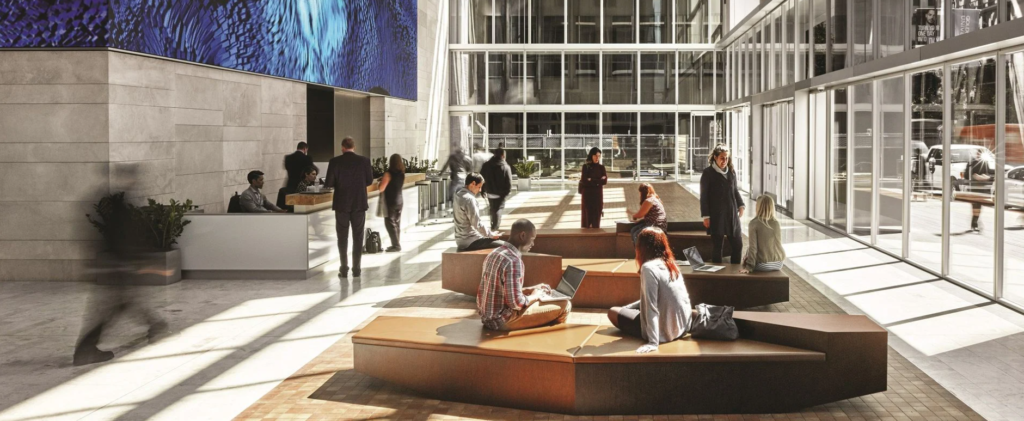
Flexible Workplace and Culture of Sharing
The physical workplace is changing to become more open, collaborative, and egalitarian. This mirrors a shift towards flexible work practices that, by their very nature, also lend workers more autonomy.
Actively-Based Working
Autonomy – the power to choose how and where to work – is a determining factor for worker satisfaction. With different tasks requiring different types of workspace, the trend is towards agile or Activity-Based Working (ABW) supported by a choice of settings ranging from concentration zones and social areas to technology-enabled remote working. This means providing work environments that facilitate remote/individual working and location-specific or collaborative work.
Many businesses and office designers have favored open plan offices as the best way to foster worker collaboration and performance. However, study after study has shown that worker productivity is actually curtailed by the lack of privacy and the high levels of noise associated with these environments.
A 2017 survey by Deloitte of almost 8,000 millennials from 30 countries, reveals that this cohort wants the choice to work in the way that suits them best. Survey respondents indicated that flexible working arrangements supported greater productivity and employee engagement while enhancing personal wellbeing, health and happiness.
Flexible Spaces
Beyond empowering workers and enhancing their wellbeing, a workplace that offers a choice of spaces can be more conducive to changing business conditions and implementing new initiatives quickly. Agile spaces can more easily accommodate fluctuations in numbers of workers and reorganizations, flexing to meet the demands of new projects and space uses.
By approaching space use with creativity and an open mind, some organizations may find they require less office space than anticipated, for example, due to remote working. By accommodating more people in fewer square meters, agile working can lower property costs while enhancing worker wellbeing. In fact, organizations can reduce their property footprint by as much as 40 percent by adopting activity-based working environments.
Our wellbeing specialists advise on facilities to be included in the workplace to follow the highest wellbeing standards. Our engineers design structures to maximize the lettable space while minimizing structural elements such as columns to allow for flexibility in the office fit-outs. Our MEP engineers design the building systems so they support demanding spaces such as areas featuring extensive greenery, but also so they can be easily reconfigured to meet tenant’s changing needs. Furthermore, they can implement user-controlled HVAC systems allowing them to control temperature and amount of fresh air they receive at their work stations. Our interior fit-out teams can formulate methods for calculating occupancy levels for each type of workspace and then, working with our partners on the project, create appropriate layouts that best fit the tenant’s needs. Our specialists create lighting and acoustics design concepts for dynamic, multi-use areas so they can be adapted to changes in space use.
Shared and Public Spaces
Along with the increasing focus on the workplace as a place of collaboration, comes the trend towards work environments that resemble a community. ARTISTA is working with a number of clients to create mixed-use campuses that contain multiple, integrated destinations. The popular concept of co-working is applied on a larger scale, allowing businesses of all sizes to benefit from one another’s ideas and experiences. Multi-tenant floors share common spaces such as break rooms and conference rooms to foster both formal and informal interaction among workers, but also with the public.
ARTISTA works with each client to understand their specific business objectives to create the most effective environment for their workforce or business community. But our aim is always the same: to leave workers more satisfied, motivated, and creative – exactly the kind of individuals needed to deliver high performance.
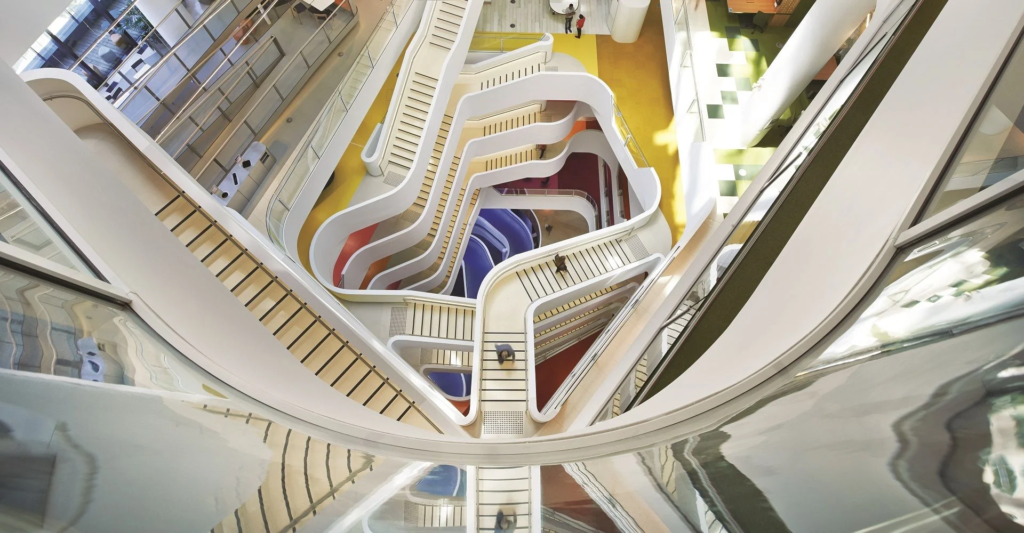
Creating Thriving Workplaces
ARTISTA provides a multitude of services directly influencing workplace design – from structural and MEP engineering, to tenant interior fitouts, smart solutions, specialist services, and wellbeing and sustainability consulting. Our breadth of expertise means we can be a key partner for end-users, architects and developers in delivering successful workplaces.
